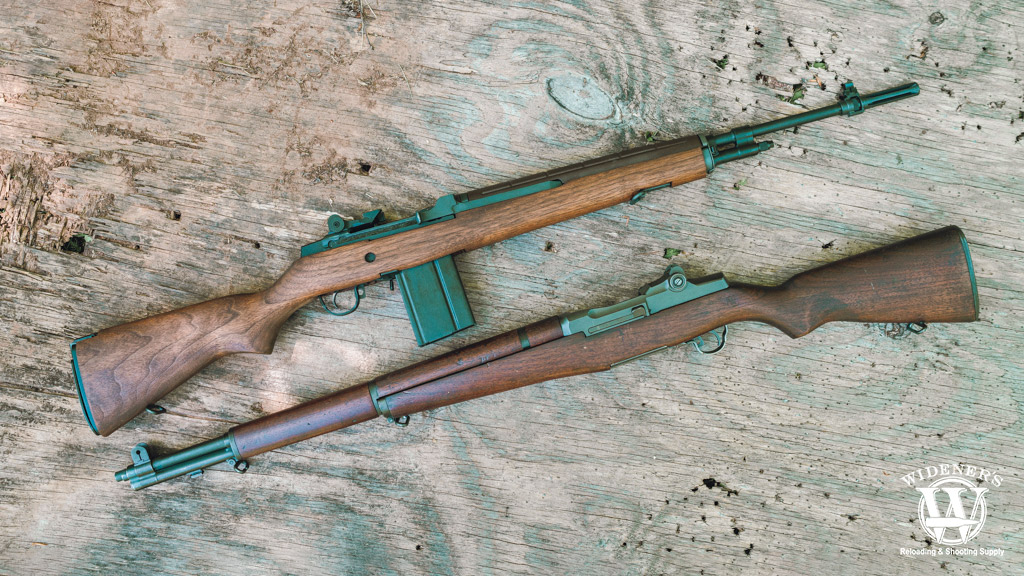Denizens around here (at TCJ) enjoy some history and probably know more about these two rifles than this article delivers. Mixed with the back story of both and a bit of technical talk, and several factors and trade-offs in the report, we thought you might enjoy adding comments to enlighten further. For the collector, it’s probably a no-brainer, but a modernized M14 has some value in use.
So you want to buy a classic battle rifle? Fair enough. It’s something that most men desire to own in their lifetime. Sure, you could buy a Rolex, Leica camera, or some other luxury tchotchke. But there’s something about a linseed oil-rubbed woodgrain stock and parkerized stainless steel finish that excites you. It calls to you on some primal level. The only question is how do you decide between the M14 VS M1 Garand?
The M1 Garand served with distinction in both the Pacific and European theaters of World War II. Gen. George S. Patton called it, “The best battle implement ever devised.” This semi-automatic rifle accompanied our troops in the Korean War and claimed the U.S. Military’s small-arms throne until 1957, when the M14 took the kingdom.
Not everyone was happy with the decision, and opposing camps remain deeply entrenched on both sides of the M14 VS M1 Garand debate.
Ironically, the man who designed the heavy-hitting .30-’06 Springfield-chambered gun that American troops used on D-Day, Guadalcanal, and Inchon, also helped create its replacement. John Cantius Garand, eager to aid the war effort, refused a single cent in royalties for the roughly five and a half million M1s that bore his name. A post-war attempt in Congress to issue him $100,000 in gratitude failed. Although he was born north of the border, near Montreal, Canada, he was a patriotic American.

M14 VS M1 Garand: The M14/M1A (Top) has a higher capacity, but many prefer the simple operation of the M1 Garand (bottom).
At a glance, the M14 looks like a modern version of the M1 Garand. It still has all the charm of a classic battle rifle, but its upgraded features give it a contemporary flair. It weighs roughly 9.2 Lbs unloaded, while the M1 Garand tips the scales at 9.5. Their barrel lengths are 22 and 24 inches, respectively. Muzzle velocity is nearly identical—a byproduct of cartridge propellant improvement, as it turns out. The newer model was also about an inch longer, despite the shorter barrel.
In hand, the M1 Garand feels more balanced. It may be heavier, but the weight distribution is better. The detachable magazine of the M14 makes the rifle difficult to rest in any position other than its side. The peep sights on both rifles look the same, but something about the M1 Garand’s setup feels more natural when sighting a target. Both guns have a safety in the same position on the trigger guard. The trigger pull and reset on both rifles is similar, with the M14 having a slight edge in reset smoothness.
The rate of fire, however, is where the M14 shines. The limited number of fully automatic guns could deliver 700 to 750 rounds per minute. The vast majority, however, were semi-autos capable of slightly improved speed over the M1 Garand – which stood at 40 to 50. When firing both guns side-by-side, you’ll notice the M14 has a bit more muzzle rise. The M1 Garand has more felt recoil, it’s “kick” is harder. Follow-up shots become natural once you figure out each rifle’s cadence. So it comes down to which gun you’re most comfortable with operating.
Check out the rest at the link.
H/T g/@silvernightpanther, the editor of the piece.




